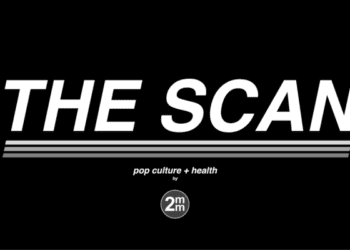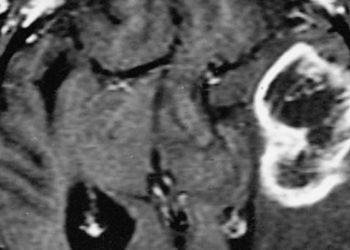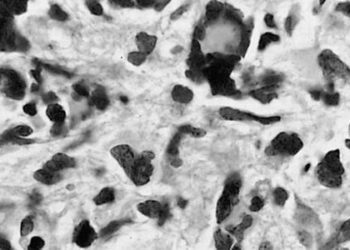Patient Basics: Glioblastoma Multiforme
Originally published by Harvard Health.
What Is It?
Glioblastoma multiforme is a fast-growing brain or spinal cord tumor. It affects the brain more often than the spinal cord. These tumors grow from glial cells which form the (supportive) tissue of the brain and spinal cord. Glioblastoma multiforme is also called glioblastoma, grade IV astrocytoma, or GBM.
As it grows, a brain tumor can press against or damage nerves or other structures. This can interfere with the brain’s normal functioning. For example, a brain tumor can disrupt:
- Thought
- Memory
- Emotion
- Movement
- Vision
- Hearing
- Touch
Scientists do not know what causes most brain tumors. However, they are working to better understand the biology of glioblastoma multiforme and identify possible environmental, occupational, family, and genetic risk factors.
Symptoms
As brain tumors grow, they press against or damage nerves or other part of the brain and interfere with thought, memory, emotion, movement, vision, hearing, touch, and other brain functions. Swelling and fluid buildup can also affect brain function.
The most common symptoms of glioblastoma are:
- Frequent headaches (usually worse in the morning)
- Nausea and vomiting
- Memory loss
- Seizures
- Changes in personality, mood, and ability to concentrate
- Changes in speech, vision, or hearing
Many other conditions can cause these symptoms, but call your doctor promptly if you experience any of these problems.
Diagnosis
Diagnosis often begins with a medical history. Your doctor will ask you about your symptoms and past illnesses and treatments.
Your doctor will also do a neurological examination—she or he will check your:
- Reflexes
- Coordination
- Feeling
- Pain response
- Muscle strength.
He or she may check your eyes for signs of increased pressure or swelling.
Your doctor may also order one of the following imaging tests:
- Magnetic resonance imaging (MRI). MRI uses a large magnet and radio waves to take detailed pictures of the brain and spinal cord.
- Computed tomography (CT) scan. A CT scan takes detailed pictures of the brain using an x-ray camera that rotates around the body.
- Positron emission tomography (PET) scans. PET scans use radioactive substances to see how organs and tissues are working.
Magnetic resonance spectroscopy (MRS). MRS is a brain scan that looks at biochemical processes in the brain.
The only way to be sure that a brain tumor is a glioblastoma is by looking directly at the tumor tissue. Your doctor takes a sample of the tumor, which is then examined under the microscope.
Patients with glioblastoma often work with several types of doctors. These specialists include:
- Neurologist
- Neurosurgeon
- Neuro-oncologist
- Radiation oncologist
Expected Duration
A brain tumor will continue growing until it is treated. Without treatment, permanent brain damage or death can result.
Prevention
There is no known way to prevent glioblastoma. Some risk factors may increase a person’s chance of developing a brain tumor. These include radiation therapy to the brain and certain inherited disorders.
Treatment
Unfortunately, right now, no cure for glioblastoma. Treatment aims to:
- Relieve pain and symptoms
- Improve quality of life
- Prolong survival
Treatment depends on the patient’s medical and personal situations. It generally includes surgery, radiation, and chemotherapy.
Surgery. In most cases, surgery is the first step in treatment. The goal is to remove as much of the tumor as possible. This helps to relieve symptoms. Doctors can also examine the tumor tissue to confirm the glioblastoma diagnosis.
Sometimes a biopsy is done instead of surgery to confirm the diagnosis. This might be done if a patient is not healthy enough to withstand surgery.
Glioblastoma tumors grow like tentacles into surrounding brain tissue, so it is often not possible to remove them completely. That’s why the treatment plan usually includes additional therapy to destroy the remaining cancer cells.
Radiation. Radiation therapy uses high-energy x-ray beams to stop or slow tumor growth. Patients usually get radiation treatment following biopsy or surgery.
External beam radiation therapy aims high-powered x-rays at the tumor and surrounding tissues from outside the body. Another approach is called interstitial radiation or brachytherapy. In this case, radioactive substances are implanted directly into a tumor.
Proton therapy is a type of radiation often used for patients with glioblastoma. Proton therapy provides pinpoint focusing of the radiation beam to the tumor. This lessens the chance of damage to surrounding normal brain tissue.
Chemotherapy. Chemotherapy uses drugs to stop the growth of cancer cells. It can be taken by mouth, injected into a vein or muscle, or placed directly into a body part.
Some chemotherapy drugs destroy cancerous cells or prevent them from reproducing. Others alter a tumor’s behavior by changing the environment around it.
Several medicines are available to help manage the symptoms of glioblastoma. These drugs can reduce swelling around the tumor, control seizures, and lessen nausea and vomiting.
Glioblastoma in children
As with adults, surgery is often the first treatment. It aims to remove as much tumor as possible. Surgery is followed by radiation therapy and often by chemotherapy. For very young children, radiation may be postponed until after age 3.
When To Call a Professional
Contact your doctor if you experience any of the common symptoms of glioblastoma, including:
- Frequent headaches (usually worse in the morning)
- Nausea and vomiting
- Memory loss
- Seizures
- Changes in personality, mood, or concentration
- Changes in speech, vision, or hearing
Prognosis
Glioblastoma tumors are among the most malignant. Younger patients tend to have better outcomes. Sadly, only a small percentage of adults survive five years beyond their diagnosis.
Additional Info
National Cancer Institute (NCI)
U.S. National Institutes of Health
NCI Public Inquiries Office
6116 Executive Boulevard
Bethesda, MD 20892-8322
1-800-4-CANCER (1-800-422-6237)
TTY: 1-800-332-8615
http://www.cancer.gov/
American Cancer Society (ACS)
P.O. Box 56566
Atlanta, GA 30343
Toll-Free: 1-800-ACS-2345 (1-800-227-2345)
TTY: 1-866-228-4327
http://www.cancer.org/
American Brain Tumor Association
2720 River Road
Des Plaines, IL 60018
Phone: 847-827-9910
Fax: 847-827-9918
Toll-Free Patient Line: 800-886-2282
National Brain Tumor Society
124 Watertown Street, Suite 2D
Watertown, MA 02472
Toll Free: 800-770-8287
http://www.braintumor.org
Dana-Farber Cancer Institute
44 Binney St.
Boston, MA 02115
Toll-Free: 1-866-408-DFCI (3324)
http://www.dana-farber.org



